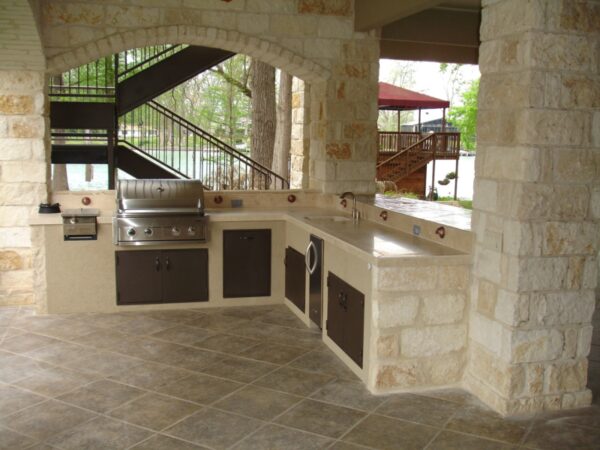Disclosure: This post may contain affiliate links, meaning we get a commission if you decide to make a purchase through our links, at no cost to you. Please read our disclosure for more info.
Last Updated on May 9, 2024 by Steal the Style
If you’re a lucky homeowner, chances are you value your outdoor space a lot. After all, it’s a great place to engage in your hobbies, play with your pets, and have an amazing time with your friends and family. Even though summer is officially over, you can still make the most of it with garden parties and friendly get-togethers. However, your outdoor experience won’t be complete without a proper cooking station.
Designing an outdoor kitchen is no easy feat. It has to be functional, comfortable, and esthetically pleasing, and many people may find it challenging to combine these three features. However, with a bit of effort and creativity, no task is impossible. In this article, you’ll find five useful tips for building your cooking station perfect for the outdoors. Without any further ado, let’s jump right into it!
In This Post:
1. Consider Your Space
Why bother with designing an outdoor cooking station in the first place? Well, cooking inside the house and carrying everything over, including the food, plates, and cutlery, is less than convenient. Experts from Outdoor Cooking Pros guarantee that regardless of your property’s size, you can still come up with a functional project.
You can successfully design even a small outdoor kitchen if you give enough space for each necessary component. Most importantly, you should start from the area for preparation and cooking. These should be located close enough to facilitate food transfer. Then, plan your entertainment zone, which will be the place for social interactions. Depending on the space you have at your disposal, you may stay indoors or have to move it to the garden.
2. Choose Your Cooking Style
Now, for the most important part, it’s time to pick your favorite cooking method. Some people swear by dishes prepared on an electric grill, others prefer charcoal barbeque, and those who want to put a lot of time, effort, and resources often opt for an outdoor brick oven. Additionally, you can also find a stove or an oven come in handy, especially if you’re preparing many meals at once. Ultimately, if you have the skills and space and want to combine different types of cooking equipment, there’s no stopping you!
3. Pick the Right Equipment
Once you decide on your cooking method, you can start looking for the right equipment. You may be thrown into a loop here, with all the brands and different models available on the market. However, what’s also important is to choose whether you want your outdoor kitchen to be portable or permanent.
In case you’ve got plenty of space and don’t plan to move anytime soon, you may consider installing permanent, built-in equipment. On the other hand, if you only rent a place or know you’re going to buy another house soon, it may be best to choose all the furniture and appliances that can move with you. Both options have their pros and cons; ultimately, the choice is yours, and you should think about the comfort and functionality of your outdoor kitchen space.
4. Places for Everyone
Obviously, you won’t be eating alone. As such, it’s important to think about places for your guests. Sure, you can go all the way and organize some tables and chairs for fantastic garden parties. But what if the weather doesn’t allow you to make use of your lawn? You should always be prepared to host your guests under a roof. For that, you’ll need a proper seating area with comfortable furniture. Once again, you can opt for portable options, semi-permanent ones such as bar seating, or you can install built-in seating and, for example, decorate with colorful blankets or pillows.
5. Proper Maintenance
Portable or not, your outdoor kitchen will be exposed to the elements. Even if you don’t use the equipment often, you still need to keep it in good shape in order to provide your guests with healthy food. As such, make sure you cover all the surfaces and appliances. In case of a portable kitchen station, have a safe place to store all the items safely.
Also, don’t forget to clean your kitchen station after you’re done cooking. Grease, dust, coal residue, and other food-related components can build up over time. The rule is simple: the dirtier your appliances, the worse the dishes that come out of your outdoor kitchen. Always remember to take care of all the surfaces that come in contact with the food you prepare and serve.
The Bottom Line
Outdoor cooking is a great idea to spend time with your friends and family. However, before you start planning your backyard get-togethers, you need to take care of your cooking station. If you already have the necessary equipment, check out our list to see if you can improve anything. As you can see, there are many easy and budget-friendly ways to elevate your outdoor cooking experience.
In case you’re new to this idea – that’s even better! You can start with a clean slate and plan everything from the beginning to the end. Feel free to use our tips, as they’re likely to help you design your dream outdoor kitchen station. Have fun!

